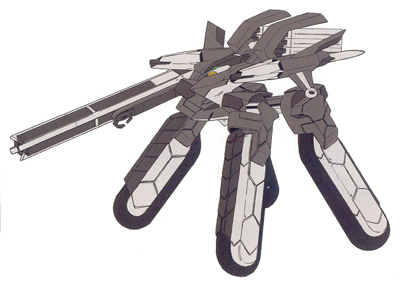|
AM-004L Landlion
Model number: AM-004L
The unfairly-maligned Iris Corporation had garnered a reputation for designing unusual mobile weapons in the post-Interregnum period, and perhaps more infamously, another for passing them off to anyone with cash on hand. One of Iris' last major inventions, the Tesla drive, proved an incredible boon to their production of mobile weapons. The Lion series of armored modules - a less-expensive alternative to typical mobile suit designs - immediately proves popular in the post-Interregnum defense market, which spurs on the development of additional Lion-type units for specialized environments. The AM-004L Landlion appears to be something of a "devolution" of the original Lion, as its aptitude for flight has been replaced by a quartet of treads, restricting the Landlion to surface warfare. Though its mobility has suffered accordingly, the Iris Corporation has offered that an airborne unit might not always be the best choice for a given defense need - the Landlion also serves as a quiet reminder that unlike most airborne-capable mobile suits, the Lion armored module cannot meaningfully fight on the ground. The Landlion's reactor is utilized to generate electric power for the four "stick mover" caterpillars, which are magnetically driven. It maintains a relatively light weight, however, enabling it to be quite fast and maneuverable for a land-based mobile weapon. It also utilizes the torso and body of the navalized AM-004S Sealion, resulting in a modest improvement in durability and armor protection. While the Tesla drive was not removed from the design, its output is significantly reduced, making the Landlion only capable of hovering or making short "jumps", primarily to facilitate clearing obstacles.
Rear view |



